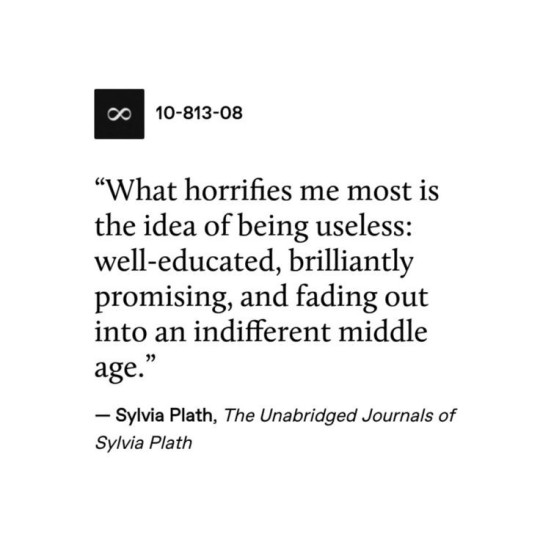#enneagram 5
Text
trying to resist the intp stereotype but then i love being alone, love anime, doesn't sugarcoat my words, has a messed up sleep schedule, prefers the night over day, loves researching on topics that interests them, weirder than other people around me, likes the idea of gaming (tho i don't actually game), sensitive, likes intj people, people think i'm a loner, hardcore procrastinator, lazy, a child in a grown body, intelligent and dumb at the same time, has an identity crisis atleast once a year, cat person, doesn't cry frequently, is a enneagram type 5, people say i'm rude even tho i don't intend to be or even view myself as rude, can be confident and awkward at different times, uses the "it depends" phrase.
@sleepy-vix
#lmaoo reblog and add more these are the only ones i have now 💀#intp things#intp stuff#intp personality#enneagram 5#typology#mbti#enneagram#tritype#temperament#psychology#intp
259 notes
·
View notes
Text
𝙲𝚑𝚒𝚕𝚍𝚑𝚘𝚘𝚍 𝚘𝚏 𝙴𝚗𝚗𝚎𝚊𝚐𝚛𝚊𝚖 𝚝𝚢𝚙𝚎𝚜
𝚃𝚢𝚙𝚎 𝟻 : 𝚝𝚑𝚎 𝚒𝚗𝚟𝚎𝚜𝚝𝚒𝚐𝚊𝚝𝚘𝚛



the quiet kids, kids who like to disappear inside their own mind, kids who don't want to lose the safety it provides. Its likely that E5 kid didn't feel nurtured enough, especially by their mother which caused the painful feelings of longing, isolation. To defend themselves against those feelings the kids started to occupy their minds with something else, they retreated into their mind. The kids thought by not wanting any emotional nourishment from the nurturing figure they can truly become independent. Its possible the kids never felt safe with their family. Detachment & forcing themselves to not desire any emotional engagement with others became their defense mechanism. As a child it feels very overwhelming and unsafe for them to leave their mind. When the E5 kids needed other people's mental support the most in order to survive , they were neglected & left alone. Most likely the mother figure was unresponsive to E5 kid. As an adult, they are forever stuck in the last & third phase of separation "detachment" since childhood.
{ writing this was a bit uncomfortable for me as an E5 because it brings back the painful feelings from childhood. }
#psychology#enneagram#mbti#personality types#introvert#enneagram 1#enneatypes#enneagram 5#5w6#5w4#enneagram 8#intp personality#intp memes#mbti intp#intp problems#intj#mbti intj#intj personality#intj female#mbti personality types#mbti memes#mbti types#mbti personalities#entp#entp memes#entp personality#entp problems
346 notes
·
View notes
Text
New Links
I cleaned up some of the links on the website, which temporarily made the page links invalid. These are the new Enneagram links.
Enneagram 1: The Reformer
Enneagram 2: The Helper
Enneagram 3: The Achiever
Enneagram 4: The Individualist
Enneagram 5: The Investigator
Enneagram 6: The Loyalist
Enneagram 7: The Enthusiast
Enneagram 8: The Challenger
Enneagram 9: The Peacemaker
#enneagram#enneagram 1#enneagram 2#enneagram 3#enneagram 4#enneagram 5#enneagram 6#enneagram 7#enneagram 8#enneagram 9
372 notes
·
View notes
Text
"Integration is healthy and disintegration is unhealthy" is an overly simplistic, spiritual bypassing view to throw in the bin. I'm going to invite you to view it in a different way.
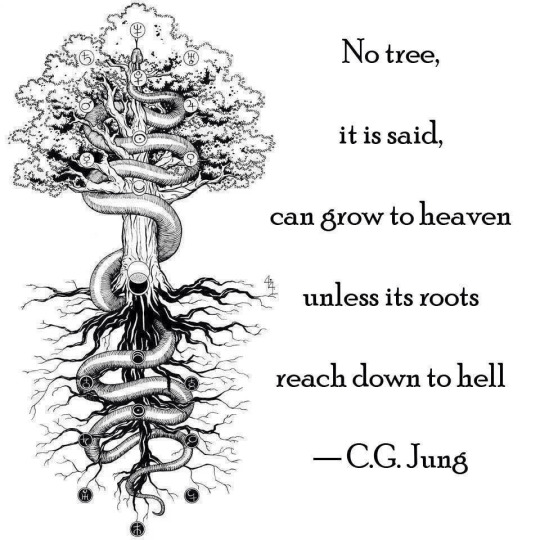

Integration is your heaven. Your light. It represents what you aspire to embody, but feel scared to embody, or cannot seem to embody no matter how hard you try. You do not have enough personal development, insight or healing to embody your integration type properly. False security is when you embody your integration type in a shallow way. You indulge in your integration type without having done enough healing to make the transformation secure, deep-rooted and long-term. You're reaching up to heaven but your roots don't reach down to hell, and so your extension is very short-lived. The excess branches you have grown to reach up to your integration type quickly die or worse, get infected, as your root system down in hell is not strong enough to sustain the tree. After periods of false security you are left with a lot of trauma, a big mess in your life, and you get pulled right back into your disintegration type's grip. You indeed can integrate in an unhealthy way... and you can also disintegrate in a healthy way. Keep reading.
Disintegration is your hell. It represents your natural stress response, your toxic coping mechanism, the thing you just really hate in yourself and in other people, your default way of overcompensating for your core type's missing pieces, your darkness. Inside your disintegration type is a wealth of secrets and wisdom that you need to uncover, including your wounded inner child. When we analyze our disintegration type and our own personal disintegration experiences, we learn a lot about ourselves. We can only learn what we are missing and what we need to work on from our disintegration type, not from our integration type. Healthy disintegration provides us the necessary foundation that we need in order to reach up towards our integration type. Disintegration is not something to be resisted the same way that cleaning your room and doing exercise is not something to be resisted just because it doesn't feel good. Conscious Disintegration is an essential part of shadow work. It is what Carl Jung would call "making the unconscious conscious".
-----
Integration and disintegration are definitely not the same. But they are also not black and white, "one is good and the other is bad". If you view it this way you are bound to bypass your necessary shadow work and end up in a cycle of false security and extreme disintegration.
#enneagram#enneagram 1#enneagram 2#enneagram 3#enneagram 4#enneagram 5#enneagram 6#enneagram 7#enneagram 8#enneagram 9#shadow work#carl jung#personality theory#typology#integration#disintegration
161 notes
·
View notes
Text
Connectinon Between Childhood Trauma and Enneagram
I've decided to share some of the stuff I learned about the childhood experience of all Enneagram types, and how this experience shapes us into a certain type. All this is based on some of my observations and studies plus backed up with some info from the books: Personality Types: Using the Enneagram for Self-Discovery by Don Richard Riso & Russ Hudon and The Enneagram Guide to Waking Up by Beatrice Chestnut.
And do keep in mind that it’s just a general pattern and observation - while it’s a lot more common for a certain type to have such a childhood experince, nothing is set in stone.
Type 1
A person could have been shaped into a One based on the experience from their early childhood where they had strict and controlling parents, which from early childhood showed the little One that they have to be responsible person, that is more mature than their peers:
Early in life, One had a painful experience of feeling criticized. When this happened, he felt pressured to conform to others’ standards of good behavior. One unconsciously tried to cope with the pain of feeling judged and punished by proactively monitoring and criticizing himself before others had a chance to. He internalized the standards others applied to him and tried to be good and do the right thing all the time. He began to feel that he had to be perfect to be seen as worthy and that he had to work hard to control himself in order to be “good.”
From: Enneagram Guide to Waking Up by Beatrice Chestnut.
Alternatively, One could have had Incompetent, naive, and/or immature parents, which showed the little 1 that they are incapable of taking care of them, so this child had to grow up too early, and become the “adult one” themselves. Type One is part of the Frustration triad, which was dissatisfied with their parental figures. They could also have been frustrated with too many rules in the family, so they developed their own vision of how things should be:
The disconnection from the protective figure, and what that person symbolized, was of central importance to the development of the superego: these children felt that they could not rely on the structure and guidelines provided by their family of origin. They may have experienced the rules of the family as arbitrary and unfair, or too strict, or too unstable. Whatever the particulars, Ones were dissatisfied and frustrated with the structure and limits that they received from the protective-figure and so felt that they had to develop their own guidelines.
From: Personality Types: Using the Enneagram for Self-Discovery by Don Richard Riso & Russ Hudon.
Type 2
All the attention and focus of type Two goes towards love and care because, as children, they felt unloved, not needed and uncared about (which is more of the case with an unhealthy childhood experience).
As Two grew up, she experienced bad feelings when some of her needs weren’t met by the people around her. Sometimes when she was hungry, no one came to feed her. Sometimes when she got hurt, no one realized she needed comfort. And when she felt her deep need for love, she often felt that she did not receive it. Two tried to find the love she needed by expressing love for the people around her. She tried to get them to take care of her by taking care of them. If she was very pleasing, helpful, and supportive of others, she thought, they would want to be very pleasing, helpful, and supportive of her. They might remember to take care of her. To get the love she needed so much, Two found herself doing all she could to please the people in her world.
From: Enneagram Guide to Waking Up by Beatrice Chestnut.
Alternatively, type Twos could have been slightly more connected to the protective figure, as opposed to the more nurturing one, or they may have grown up without a nurturing figure altogether. So Twos learned to take up on a role of a nurturing figure themselves.
Since the orientation is toward the protective figure who represents the qualities associated with patriarchy— authority, structure, discipline, guiding the child in the ways of the world—the child began to identify with the complementary, matriarchal role. Young Twos learned to become "little nurturers" as a way of gaining safety and security in the family system. In other words, they believed that if they could nurture others in their family sufficiently, they could win the affection and protection of the protective-figure. This relationship with the protective figure sets the stage for a similar orientation toward everyone who can give Twos the love they want.
From: Personality Types: Using the Enneagram for Self-Discovery by Don Richard Riso & Russ Hudon.
Type 3
The strong impulse to achieve, be better and be praised that type Three craves stems from their childhood experience, where they were only (or mostly) loved and given attention when they somehow stood out from their peers, particularly for their accomplishments.
Three saw that she was praised for what she did, not for who she was. Everyone around her got very excited and happy when she successfully completed her homework, or did a trick in gymnastics, or won a game. But when she expressed her true emotions, when she felt sad or disappointed or hurt, no one paid any attention to her at all. She felt lonely and scared when no one recognized her or cared about what she expressed from her heart. People seemed to like her when she accomplished things; but they acted as if she didn’t exist when she was just being herself. Three found a way to make sure that she wouldn’t feel alone or fearful anymore. She discovered that she had the ability to sense what people valued and then magically turn herself into exactly that.
From: Enneagram Guide to Waking Up by Beatrice Chestnut.
Alternatively, Threes are also part of an Attachment triad because they were very connected to the mother (or the mother figure) - basically, anyone that praises and admires them, showers them with gifts and compliments, and they got so attached to this person from early childhood that they learned to act in a way that will receive this positive affirmation.
As young children, Threes were connected to the nurturing figure, the person who in their early development mirrored them, cared for them, and provided affection and a sense of the Three's personal value. This person is usually the Three's mother or a mother-substitute, but not always. In some cases, the mother may have been largely absent, physically or emotionally, and it fell upon the father or a sibling to nurture the baby. In other cases, a nanny or grandparent may have fulfilled this role. In any case, it is important to understand that the nurturing figure is the person who cared for the child and who provided mirroring. In their formative years, Threes learn to tune in to the desires and hopes of their nurturing-figure. As adults, Threes continue to play out this pattern learned in early childhood. They seek out people whom they admire and esteem to give them validation and admiration.
From: Personality Types: Using the Enneagram for Self-Discovery by Don Richard Riso & Russ Hudon.
Type 4
As young children, type Four felt a loss of connection with their parents. Similar to type Two, they felt that they were unloved and not needed, but unlike Twos that were ambivalent to their parental figures, Fours felt completely disconnected from them. Moreover, type Fours started to believe (or were even directly told) that the parents are no longer connected and appreciate them because of the Four's fault, that they are somehow to blame. Maybe they were a child of a younger couple that has the kid too early and then blamed the Four, maybe claiming that them being born ruined all the opportunities for these now-parents. Four could have also started to think on their own that since the parents no longer like and care for them as much, then there must be something wrong with them, that they are not like everyone else.
Fours are disconnected from both parents. As children, they did not identify with either their mothers or their fathers. ("I am not like my mother; I am not like my father.") They may have had either unhappy or solitary childhoods as a result of their parents' marital problems, divorce, illness, or simply because of personality conflicts within the family.
From: Personality Types: Using the Enneagram for Self-Discovery by Don Richard Riso & Russ Hudon.
Even more often there could have been a sibling rivalry in the family, where Four was the older sibling, and all the attention was given to their younger sister(s)/brother(s) while they felt abandoned, so they felt the need to somehow stand out to be noticed.
A baby was born. It was as if Four’s perfect world ended. No longer was she the center of her parents’ attention. No longer was she the most special child in the world. When she wanted someone to play with or a hug, everyone was busy taking care of the baby. She felt unimportant, alone, and ordinary. Four made sense of this terrible new situation by believing that she must have done something wrong to cause the loss of connection with her parents. After all, they didn’t seem to care about her the way they did before. It must have been her fault. They must have discovered there was something wrong with her. This new baby must somehow be better. What other explanation could there be? Four’s new way of thinking caused her some pain and distress, but gradually she got used to feeling bad—and sad. And, she reasoned, if it was her fault that she had lost the connection she had once felt—maybe that meant she could do something to make things right. Maybe she could somehow make a connection with others and the world again by showing everyone how special she was— or by making them see how much she was suffering by acknowledging that she wasn’t as special as she had thought. Over time, Four tried different ways to rebuild the connection she had lost. She tried to get people to see her as special again.
From: Enneagram Guide to Waking Up by Beatrice Chestnut.
Type 5
In their early childhood, Type Fives felt an almost smothering influence of their parents: they could have been way too involved in the lives of their child, too clingy, giving them little to no privacy, and constantly invading their personal space, leaving too little room for Fives to withdraw and be left alone. That is what developed a Withdrawal stance in type Fives, as they started to realize that if they will let other people way too close, that they start to get too overly involved in other people’s lives they will also start to lose that independence and will again be overwhelmed with people’s attention and demands. So Fives learned to not only minimize their needs but to also avoid investing in a lot of relationships.
When she was young, Five tried to create true heartfelt connections with people. However, those people had a tendency to invade her space when she felt like being alone. And then they weren’t around when she really wanted them to be. Both intrusion and unavailability were a cause of constant concern for Five, which made it hard for her to know what to do to relate well to others, especially when she felt intruded upon or neglected. She secretly felt inadequate and different from others. Trying to find ways to connect with them just frustrated her. Again and again, people either left her when she felt she needed them or they didn’t allow her to be alone enough. As time went on, Five finally gave up and disconnected more and more from others and from her feelings. Five found she felt calm and comfortable when she spent time by herself.
From: Enneagram Guide to Waking Up by Beatrice Chestnut.
Not only that but too much care and attention from parents, and their clinginess made Five think that they are caring so much because the parents think that Five is incompetent and incapable to deal with their own problems, and Fives also start to believe that as well. So they started to gather knowledge and hone skills to be safe in the world and to be able to deal with problems that could arise.
Type 6
Since their early childhood Sixes were either were constantly told that the world is a dangerous place and people are unreliable, to the point that parents almost instilled fear in them: “the monsters are hiding under your bed”, “I will tell a police to come to get you if you will behave inappropriately” etc or the Sixes experienced a traumatic or life-threatening event which made them think that they always have to be careful, that the wolves are after them, things can easily go wrong, so the Six child always has to be cautious.
As Six grew up, she had a few experiences that made her feel afraid. Her mother once forgot to pick her up at school. She was frightened by a movie that showed people being killed. She started noticing all the things that could go wrong and learned that sometimes bad things happened. The world started seeming more dangerous and more threatening to her. Six became paralyzed with fear and doubt. She wanted to feel safe and carefree as she had before, but that didn’t seem possible. The world seemed like a fundamentally dangerous place. The only thing that seemed to help was to imagine all the bad things that could happen so that she could make sure they didn’t. But any feeling of safety that brought her was only temporary.
From: Enneagram Guide to Waking Up by Beatrice Chestnut.
Alternatively, Sixes may also have a strong and protective father figure, on which they relied the most, who protected them. So losing the support of such a strong father figure and being left alone in a scary world was especially terrifying for Sixes, hence why they became the Attachment type that seeks to build connections to feel safer, like with their protective figure from childhood.
As the result of their formative experiences, Sixes became connected with their protective-figures. The protective-figure was the adult in the child's early environment who provided guidelines, structure, and sometimes discipline. This was the person who occupied the traditional patriarchal position in the family. Most often this was their fathers, or a father figure, such as a grandfather or teacher, but in many cases the mother or an older sibling may actually be the protective-figure. As children, Sixes wanted the security of approval by their protective-figures, and felt anxious if they did not receive it. As they grew up, their connection with their protective-figure shifted to an identification with substitutes for this person, such as civil authorities or belief systems from which they could obtain security.
From: Personality Types: Using the Enneagram for Self-Discovery by Don Richard Riso & Russ Hudon.
Type 7
From early childhood, Sevens felt rejected by the parental figures the same way Fours may have, but while Fours felt that parents didn’t connect to them because there is something wrong with them, that the Four is somehow to blame, Sevens felt that parents were way too busy with their life and work to pay as much attention to Sevens as they may have wanted. Sometimes, parents may have even brushed them off when the Seven was in need or pain, or the parent’s indifference to the child caused the Seven that pain, so they learned to avoid the hurtful feelings as much as possible.
One day, when Seven was paying close attention to a bee that was walking on his leg, it stung him! He burst into tears and looked around for someone to comfort him. He tried to tell his father about it and perhaps receive some comfort, but his father was angry about something and told him to “go away.” So he went to his mother, but she was busy doing something and said she “didn’t have time” to hear about something so insignificant. These responses made Seven feel even more pain—almost more than he could handle.
Seven hadn’t had much experience with pain, and he didn’t like it. So, to get away from these unpleasant sensations, he retreated into his own imagination. He started thinking about things that made him excited—watching clouds as they passed through the sky or playing with his best friend. In fact, Seven found that he was good at imagining fun and interesting things. As time went on, he became adept at diverting his attention to these thoughts whenever any kind of pain threatened him.
From: Enneagram Guide to Waking Up by Beatrice Chestnut.
Alternatively, Sevens may have encountered a serious trauma as a kid, that made them feel like they would be deprived of something, so to avoid fear of being deprived they started to adopt a more gluttonous attitude, fearing that what they need to survive may be taken away from them.
Some other childhood deprivation, such as poverty, war, being orphaned, or a long illness, may have shaken their expectation that the good things of life would be given to them. There may have been an absence of the nurturing-figure at a critical stage, or some accident that shook the child's faith that he or she would be adequately supported. It may also be that Sevens naturally need a great deal of contact and stimulation which may be more than the nurturing-figure can provide. Thus, for whatever reasons, the fear of deprivation becomes the fundamental motivation for this personality type.
From: Personality Types: Using the Enneagram for Self-Discovery by Don Richard Riso & Russ Hudon.
Type 8
Type Eight’s childhood experience may resemble one of type Six, where they felt or made believe that the world is dangerous, and people are out to get them. However while Sixes developed a more neurotic and cautious stance, thinking that they will be safe if they have someone to rely on or an ideology/law to follow, type Eight decided that they will be safe if they become strong and could face these challenges themselves, without relying on anyone. Moreover, while Sixes may have had a protective figure that could defend them when needed, Eights felt no protection from their parental figures, or sometimes these parental figures may have been abusive themselves.
Early in life, Eight had an experience in which she needed protection and there was no one there to take care of her. Sometimes there were things she just couldn’t do by herself, even though she was bright and capable for someone so young. The people in her life that were bigger than she was didn’t seem to notice when she needed to be cared for, listened to, or fed. And a few times, when one of the older kids hurt her, no one saw that she was little and needed protection. So Eight learned—the hard way—that she had to take care of herself. If no one else was going to do it, it would have to be her job. She would have to get big—fast! (Too fast.) She would have to be strong. She would have to be powerful, even though she was still small. Sometimes people around her fought, and they didn’t notice she was scared. So she would have to be fearless, in addition to being big, and strong, and powerful.
From: Enneagram Guide to Waking Up by Beatrice Chestnut.
Also, Eight could have had the opposite childhood experience from Twos, where Twos had a stronger protective figure so they had to become the nurturer, Eights had a stronger nurturing figure, so they decided that they need to become the protective figure themselves.
Eights learned that they could maintain some kind of connection with the nurturing-figure and fit into the family system by functioning in a role that was complementary to the nurturing-figure. The nurturing-figure represented (and therefore "owned") the qualities associated with motherhood: warmth, caring, nurturance, approval, gentleness, and sensitivity. Thus, the Eight identified with the complementary patriarchal role, and learned that the best way to get some sense of value, affection, and nurturance was to be "the strong one," the little protector, the one that others turn to for strength and guidance, especially in a crisis.
From: Personality Types: Using the Enneagram for Self-Discovery by Don Richard Riso & Russ Hudon.
Type 9
At some point in their childhood, Nines felt that their desires, wishes and opinions are not important or listened to. When they tried to express what they wanted, their parents may have shut that desire off, bruising it aside, or choosing for them under the pretence that they know better. At first, Nine could have protested against that, but when they started to understand that the more they protest the more arguments and conflicts it will cause, damaging their relationship with the parents, the more they began thinking that maybe what they want is not worth all the drama and discord that disrupts their inner peace. Instead, it was better to go along with what others wanted, and find comfort in other parts of life.
Nine woke up one day feeling alone and disconnected. He felt frustrated at having been left by himself and wanted to register a protest against whoever had pushed him out on his own. But this made him even more uncomfortable. There were others nearby, but they seemed somehow distant. This new sense of being separate felt lonely and scary. If he was no longer connected to the world around him, how could he feel any sense of belonging? When Nine tried to complain about this new and disturbing situation in order to re-establish his connection with others, no one would listen. Those around him spoke louder and had more important things to say. They knew what they wanted and argued to get it. They didn’t seem bothered by the fact that they were separate—and that their arguing made them more so. They didn’t seem to care what Nine was saying. He tried speaking louder and protesting more, but no one paid attention. After a while, he simply gave up. If they weren’t going to listen, he might as well go back to sleep. At least there was comfort in sleep.
From: Enneagram Guide to Waking Up by Beatrice Chestnut.
Alternatively, Nines could have lived in a very intense or unhealthy environment, that damaged them emotionally. So in order to keep their peace and sanity in one piece, they learned to numb their feelings, to protect themselves.
If their early childhood was torn by strife and dysfunction, holding all of the painful and conflicted feelings and messages inside them was almost intolerable, so average to unhealthy Nines learned to dissociate—to remove themselves from the immediacy of their feelings and thoughts so that the inner turmoil they absorbed did not overwhelm them. At the same time, they learned to tune out the conflicts and pain of the external environment, a strategy familiar to many children. This is like the young person who blocks out the sound of her parents fighting in another room by singing a song to herself or remembering happier time.
From: Personality Types: Using the Enneagram for Self-Discovery by Don Richard Riso & Russ Hudon.
#enneagram#enneagram 1#enneagram 2#enneagram 3#enneagram 4#enneagram 5#enneagram 6#enneagram 7#enneagram 8#enneagram 9
533 notes
·
View notes
Text
The Enneagram of Divine Forms — Point 5: The Observer
Will narrow the universal view into the particular and subjective point of view of the observer
Always losing perspective of the forest because their entire attention is on particular trees
Is found collecting bits and pieces
Can spend a lot of time trying to disclose the riddles of life and society
Continuous interest in observing others
Fear that they are also the focus of attentive study and observation by others
Inclined to hide and be anonymous around people
General inclination to play the social game without giving of themselves completely and openly
General attitudes of fear of the environment, natural and social, ‘nervous wrecks’ because of the pressure of their fear and stress
Perceives and projects their distortion of reality by thinking that they have been alienated by their siblings or the world
Ego-delusion: of being stingy or a person who keeps to themselves as they judge others exclusively from their personal perception and narrow point of view
Passion of avarice: amass information and accumulate, pieces of knowledge and gossip about others, as well as collecting material things
Meddling on one side and antisocial on the other
Introjection: their primary defense mechanism, in which they absorb themselves in and internalize the attributes and personalities of others by assimilating their behavior, emotions or characteristics
Self-obsessed, see themselves as a separate bystander
Assert to themselves: ‘I am sociable and self-sufficient’
Shyness which makes them nervous socially
Ego-reaction: distrust, which produces a constant looking in every direction
Ego-justification: to face facts with cynicism because of their poor idea of the motives and self-interest of others
Intense aversion or repulsion that is felt acutely, which becomes the starting point for their plotting and scheming
Considerate on one side and imposing on the other
Source: @/if u seek amy on PDB
#personality theory#personality types#typology#enneagram#ichazo#enneagram 5#5w4#5w6#intj#intp#istj#istp
52 notes
·
View notes
Text
All Enneagram Guides
Gut Types (9-8-1)
https://www.tumblr.com/blueopinions49/714684054949298176/understanding-type-9?source=share
https://www.tumblr.com/blueopinions49/713776928726958080/understanding-type-8?source=share
https://www.tumblr.com/blueopinions49/715329872464150528/understanding-type-1?source=share
Head Types (7-6-5)
https://www.tumblr.com/blueopinions49/713157696877199360/understanding-type-7?source=share
https://www.tumblr.com/blueopinions49/712508568147984384/understanding-type-6?source=share
https://www.tumblr.com/blueopinions49/712065601858895872/understanding-type-5?source=share
Heart Types (4-3-2)
https://www.tumblr.com/blueopinions49/710605851536326656/understanding-type-4-pt-1?source=share
https://www.tumblr.com/blueopinions49/711239964250324992/introduction-this-is-a-rantinformative-post-on?source=share
https://www.tumblr.com/blueopinions49/710152882517884928/understanding-type-3?source=share
https://www.tumblr.com/blueopinions49/708805690950565888/understanding-type-2?source=share
“The Instinctual Drives and The Enneagram”- John Lukovich 2021
#mbti#zodiac#zodic signs#personality types#16 personalities#ennegram#mbti personality types#enneagram#personality typology#typology#mbti thoughts#mbti things#enneagram 9#enneagram 5#enneagram 4#enneagram 6#enneatypes#enneagram 7#enneagram 3#enneagram 1#enneagram 2#enneagram 8#enneagram 1w2#2w3#3w4#4w5#5w6#6w5#7w8#8w7
112 notes
·
View notes
Text
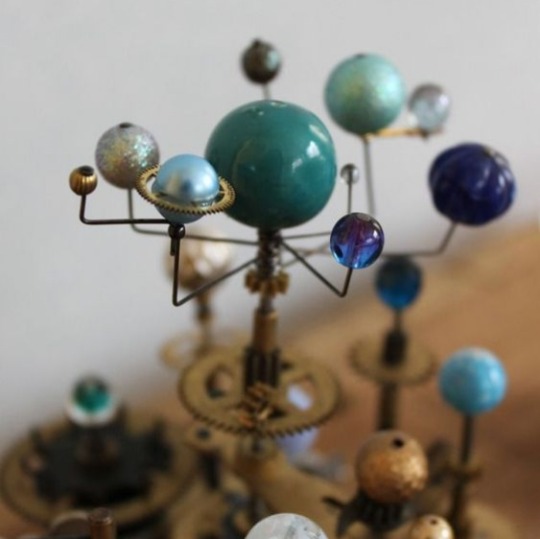
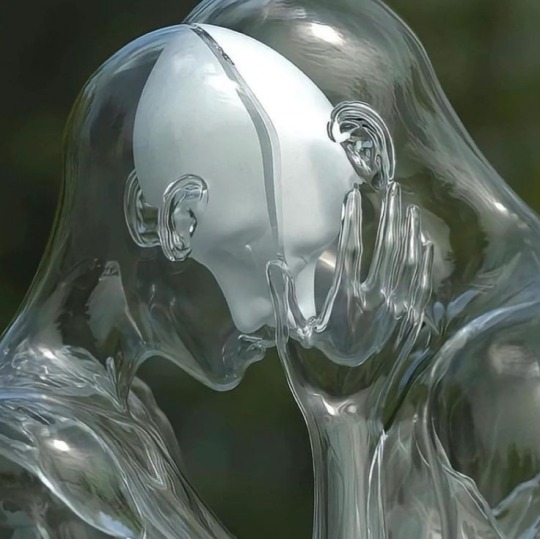


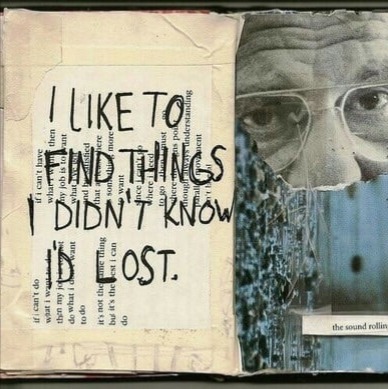
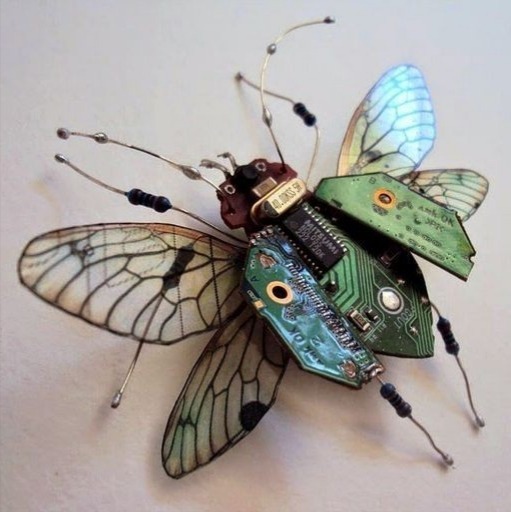



ENNEAGRAM TYPE FIVE : the scholar
-> concerned with knowledge & competence
#aes#aesthetic#aesthetic moodboard#mb#moodboard#picture credit to the rightful owners of course#aesthetic layouts#layouts#enneagram#enneagram 5#ennea 5#enneagram aesthetic#enneagram moodboard#5w4#5w6
449 notes
·
View notes
Text
100% 5 AND 99% 4 HOLY SHIT??? higher than average percentages on 6 and 9 is so true aswell wow
source: advanced-personality.com


#typology#enneagram#btw for those who dont know me i have studied the enneagrams and i can confidently say i am a 5w4 sp/sx but im skeptical of tests so i was#pleasantly surprised to see this result#sleepy vix#5w4#enneagram 5#sp/sx#instinctual variants#also i did think i was a 549 tritype but my knowledge on tritypes wasnt veryyy strong but maybe i will pick up typology again#to study tritypes
79 notes
·
View notes
Text
Enneagram Type 5
An overview of an enneagram type. Not an expert. May change later.
___
Center: Head/Thinking/Fear
Other triads: Competent, Withdrawn, Rejection
Basic motivation: To be competent, knowledgeable
Basic fear: Being useless and helpless
Wings: 5w4, 5w6
Disintegration/stress: 7
Integration/growth: 8
___
Traits
- Strengths -
Insightful
Curious and observant
Analytical and rational
Independent
Innovative and inventive
- Weaknesses -
Detached and distant
Can isolate self too often
Intense, doesn't understand feelings
Nihilistic
Feeling incapable, incompetent
___
Wings
- 5w4 -
5 and 4 are withdrawn types so a 5w4 is a very internalized type. 5w4s often need a lot of alone time to reflect and recharge. This type is a deep and sensitive thinker, very observant and detail oriented. Can be very focused and attentive. They work hard when it comes to things they are passionate about.
- 5w6 -
The 6 wing makes 5 a little more open and receptive to people. They're quite organized and structured with a plan for pretty much everything, considering 5's need to be knowledgeable and 6's need to be prepared all the time. They can be creative problem solvers and are quite practical.
___
Disintegration: 7
Disintegrating to 7 shows up in a 5 as scatterbrained behavior. Easily distracted and impulsive. Can have a hard time concentrating as their mind is filled with too much and keeps jumping from one thing to the next. A disintegrated 5 is very restless.
Integration: 8
Integration to 8 means a 5 is learning to become more comfortable in participating in the real world. Fear no longer makes them want to hide away all the time. They are capable of living outside of their minds and fully living in reality. They don't get stuck analyzing choices over and over again to the point of paralysis - they learn to just do things regardless of their paranoia.
___
Subtypes of 5
- Sp 5 -
Sp 5s are the most protective over their time and energy. They have clear boundaries they are not shy to set. Sp 5s have a need for independence and will not allow anyone or anything to take it away from them. This subtype is much more of an observer of life rather than a participant. They would rather focus their time and energy into personal projects that bring them life.
- Sx 5 -
Sx 5s are less concerned with boundaries as they seek to find a person who has a similar mindset like them. They want to find someone who can truly understand them so that the sx 5 can comfortably open up their private world to them. However, their independence can still make them fearful - it can take a lot of time for them to genuinely open up. They try to attract by having various interests and having interesting inner lives.
- So 5 -
So 5s want to be seen as competent and wise by others. They want to be seen as intellectual and so will be drawn to opportunities that allow them to showcase their knowledge and skills. However, their need to be alone conflicts with the desire to be viewed as an intelligent role model. They don't want to be overwhelmed by the world yet still want to participate in it. Although a social subtype, they may still struggle to connect with others, but they will still be drawn to like minded individuals.
___
Enneagram list
___
Side blogs:
Kpop astrology @rainy-astrology
Kpop fanarts @rainy-artworks
#enneagram#enneagram 5#5w4#5w6#typology#typology notes#ennea type 5#type 5#subtypes#5 subtypes#sp 5#so 5#sx 5#disintegration#integration
64 notes
·
View notes
Text
A poem for each EnneaType.
By Melissa Kircher, transcribed from @enneagrampaths.
A poem for EnneaType 1
and failure
isn't failing
it's actually an event
creating space
for new life
to burst into wild reality
A poem for EnneaType 2
the soot and ash
a charcoal facade
behind which
two eyes, glowing
watch out
she burns hot
A poem for EnneaType 3
I think poetry
might be inside you
the words there
ready to tumble out
I think the stars
shine only for you tonight
and the earth turns
to keep you on it
A poem for EnneaType 4
if I let out the pain
I said
it will shatter galaxies
that's fine
she replied
I made lots of them
you can break a few
A poem for EnneaType 5
stay
anchor in the depths
every drop in the ocean
sings for your presence
here. now.
A poem for EnneaType 6
opening like petals
rooted like pines
woven back whole
one thread at a time
stretching up, out, down
new rhythms like rhyme
mothered soul tender
finding child eyes
dancing forest wild
tasting deep like prophets wise
A poem for EnneaType 7
the sun hanging by a thread
details that weigh mountains
I want to find you again
the girl in the tutu that sparkled
and when I do
pulling you into my lap
I'll whisper
you already knew
the wisdom of the Universe
A poem for EnneaType 8
strong is two feet solid
in the soil
toes curled into the loam
strong is letting pain
sweep through your branches
and losing some leaves
strong is allowing the shadows to
surround you
to change you
and then
gently letting them pass
A poem for EnneaType 9
what could I do?
these were my people
so I went
I entered their anguish
I felt their relation
and then I understood
the spectrum of my own heart
#poetry#melissa kircher#enneagram#enneagram 1#enneagram 2#enneagram 3#enneagram 4#enneagram 5#enneagram 6#enneagram 7#enneagram 8#enneagram 9
66 notes
·
View notes
Text
Enneagram Meems - prt 2

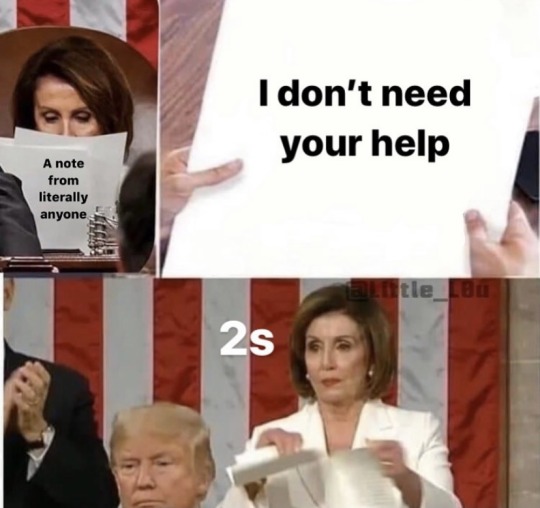
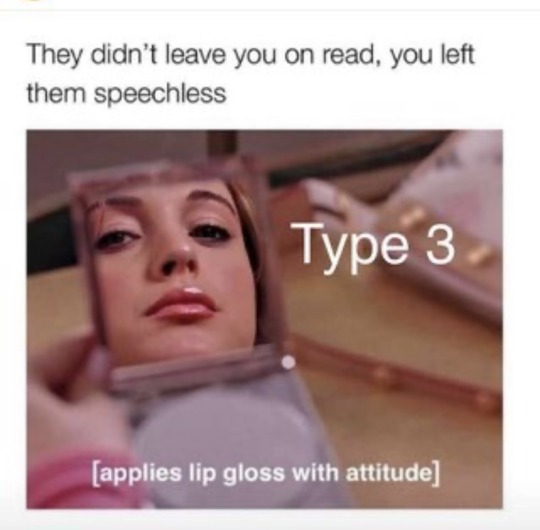
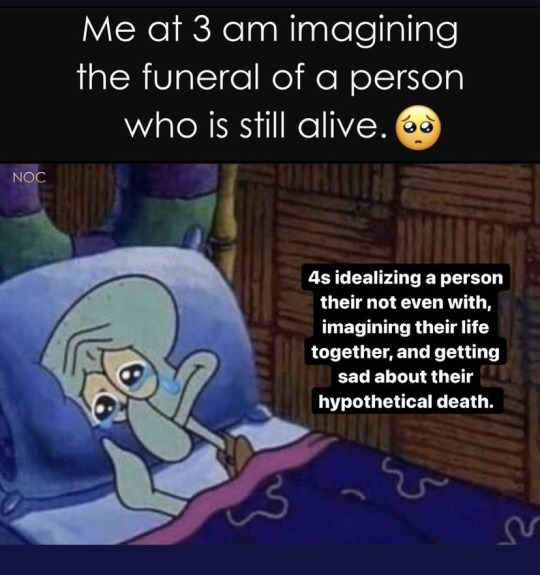

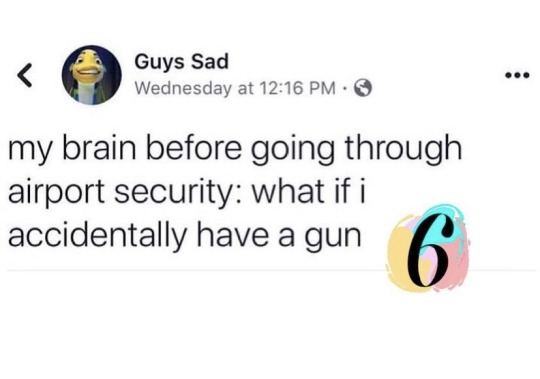



#memes#funny#laugh#haha#enneagram#enneagram memes#enneagram 1#enneagram 2#enneagram 3#enneagram 4#enneagram 5#enneagram 6#enneagram 7#enneagram 8#enneagram 9#1w2#1w9#2w1#2w3#3w2#3w4#4w3#4w5#5w4#5w6#6w7#7w6#7w8#8w7#8w9
93 notes
·
View notes
Text

#enneagram#enneatypes#enneagram 1#enneagram 2#enneagram 3#enneagram 4#enneagram 5#enneagram 6#enneagram 7#enneagram 8#enneagram 9
222 notes
·
View notes
Text
Enneagram pages about Fives: weird logical lil bugs, super shy
Actual Fives:
I am an unfillable chasm yearning for oblivion
I could eat the whole world and hunger still for death
My emotions blot out the sun; can you not hear me screaming?
23 notes
·
View notes
Text
Love is Hard for Otaku
Narumi Momose - ESFJ 2w3 sp/so

Hirotaka Nifuji - INTP 5w4 sp/sx

Hanako Koyanagi - ESFP 7w6 sp/so

Taro Kabakura - ESTJ 8w9 so/sp
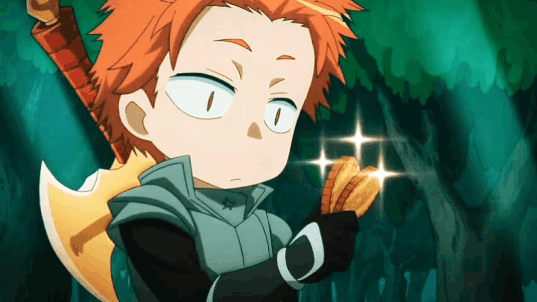
Noaya Nifuji - ENFJ 2w3 so/sx

Ko Sakuragi - INFP 6w5 sp/so

#wotaku ni koi wa muzukashii#momose narumi#hirotaka nifuji#taro kabakura#koyanagi hanako#intp#esfj#estj#esfp#enfj#infp#enneagram 8#enneagram 3#enneagram 5#enneagram 6#enneagram 2#anime-mbti#sp/sx#sp/so#so/sp#so/sx#sx/so
38 notes
·
View notes
